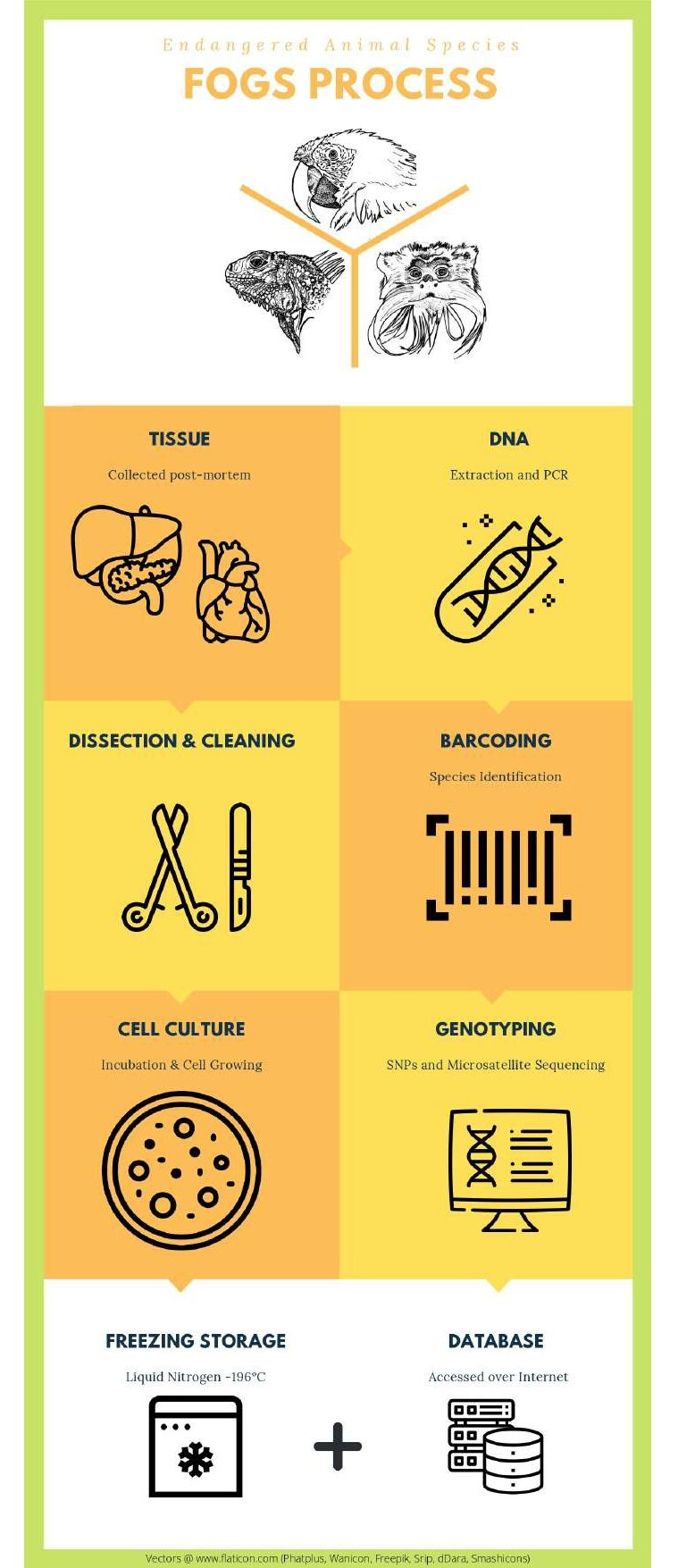What is FOGS?
Protected animals are traded illegally to a high degree, in Europe often to keep extravagant pets. The damage caused by these criminal and internationally operating activities is considerable for our biodiversity. Due to the taking from the wild, animal populations can hardly recover and species are becoming extinct. Studies show that environmental crime generates 100 to 260 billion US dollars in profits annually. Conservation authorities and law enforcement still lack routinely applicable and, above all, court-proof evidence to act effectively and protect these wild animals.
The FOGS project (Forensic Genetics for Species Protection), implemented by the Leibniz Institute for the Analysis of Biodiversity Change Museum Koenig in Bonn (LIB) and funded by the German Federal Ministry of Education and Research (BMBF), is developing DNA-based tools to protect wildlife from being traded illegally.
These tools use a combination of genetic markers: the SNPSTR technology.
On the basis of the SNPSTR markers, the origin and the kinship of the animals examined can be determined with the respective DNA reference samples. For example, it can be determined whether the breeding programs examined are actually legal offspring or whether hybrid breeding of protected birds of prey exists, which is prohibited by the Federal Species Protection Act. The analysis of these combined markers offers a very high genetic information content and even allows the differentiation of populations.
Project goal
The FOGS project, funded by the BMBF, aims to support law enforcement in the illegal wildlife trade using genetic markers. In this way, endangered animals are given a chance to recover their population and be preserved. We offer to set up a database with a freely accessible online portal containing marker and sequence data for a variety of genetic loci for endangered animal species with high relevance for the species protection authorities. The aim is to support investigations on species protection offenses in Europe employing suitable DNA-based tools, with model character and also internationally, where such databases do not yet exist. This enables customs authorities and breeders to build up a reliable database. Therefore, we are working with research partners worldwide. Once the technology for these species has been developed, the vision is that rapid tests should facilitate their use in practice. Laboratories will routinely be able to answer questions on the parentage, hybrid status, or geographical origin of animals for authorities, research institutions, and breeders.
Beyond the database, the project will also establish a physical sample biobank for the respective species, stored as a liquid nitrogen-cooled collection of tissue and DNA in the Biobank Zoological Research Museum A. Koenig in Bonn. In addition to these more conventional sample types, biopsies of recently deceased animals will also be taken to establishing cell cultures and freezing viable cells.
The FOGS Process
The Tissue samples are sent from various cooperation partners, to be processed in the ZFMK laboratory for DNA extraction and cell culture. The DNA is then sent to the Genome Centre in Cologne to later determine specific SNPSTRs markers by sequencing. So the generated sequence information will be available in the FOGS database for use in forensic cases. While the DNA material is safely stored in the ZFMK biobank.
Contact:
FOGS coordination Albia Consul fogs@leibniz-lib.de Leibniz Institut zur Analyse des Biodiversitätswandels, Museum Koenig Bonn Adenauerallee 127 53113 Bonn

